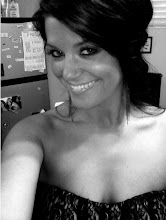“A dynamic classroom community can be created by taking teens—and their literature, seriously.” –Jennifer Buehler
I’ve known for quite some time that teaching with young adult literature is important. I didn’t realize just how crucial it was until I read Teaching Reading with YA Literature by Jennifer Buehler. There are educators who scoff at YA lit, and deem it as lower-level reading, liked by teens only because it is “relatable.” While YA lit certainly is relatable, many educators don’t realize this relation with the text allows teens the ability to make meaning out of what they read, and how they personally live their lives. In turn, that skillset allows them to thrive with making complexity out of their reading. After all, “we all know that literary analysis has more meaning when the texts we’re analyzing matter to us. The stories teens encounter in YA lit give them reasons to read both closely and personally” (Buehler 30).
Some may also argue that young adult literature does not typically have a high Lexile score. I would encourage anyone who shares this sentiment to explore what actually goes into the creation of a Lexile score. Understand that a Lexile score is made by chunking an entire text into 125-word paragraphs, each measured for Lexile, and then averaged out to give a final score. That’s it. What good is a score like that if it does not "take into account a book’s content, [or] attend to age appropriateness or writing quality? That means books with mature themes or sophisticated storytelling techniques may rate low in terms of Lexile when they’re actually very complex overall” (Buehler 28). For instance, Diary of a Wimpy Kid scores a 1000L, while Of Mice and Men (a deeply beloved core English text) only scores a 630L.
Indeed, books that read easily may still have incredibly complex themes and ideas. Novels such as The Hate U Give, Eleanor & Park, We Were Here, and Wonder are purposely written for a teen audience, but cover topics that are relevant and important not just as English students, but as human beings. Fostering this kind of reading in our English classrooms can allow students the safety and time to rediscover the love they had for reading as children. As teachers, we know the research shows us that most teens ditch reading once they hit high school. We know boys lose interest in reading before their female peers, but that girls follow shortly after. They tell us as we train to be teachers that if something is happening to the entirety of a class (such as failing a test), it’s probably the test that is at fault, and not the students. If we apply this theory to reading in the English classroom, it would be an easy assumption to make that it is not the students at fault for loss of interest, but that the texts themselves are not of much interest to teens.
Unfortunately, there are stereotypes surrounding YA lit that hinder many teachers from using them in their classroom. The stigma such literature holds in our reading culture must be eradicated. To ridicule YA lit is to ridicule the teenage experience. If we want our students to become readers, then we need to value what they identify with. After all, don’t we, as adults, read only the novels that we identify with on some level? I can understand that some YA novels may lend themselves to portraying the stereotype that young adult books are not intellectual. Take, for instance, the beloved Twilight series. Yes, they’re a guilty pleasure of mine, and yes, I attended all the midnight movie premieres donning homemade “Team Edward” shirts with my best friend Sam. But the novels themselves are hardly intellectual, and the main character is a weak young girl who only finds strength through the man she finds herself with. There’s not a lot of substance behind this series, even if it was enjoyable to read. However, you’ll find this same kind of “summer reading” in books geared towards adults, like with the Sookie Stackhouse series.
But, start to navigate your way through the vast amounts of young adult novels out there, and you will find pages teeming with all kinds of potential for analytical and intellectual conversation. Again, in books like The Hate U Give, Eleanor & Park, Wonder, and We Were Here, our characters fight like hell to find out who they are while facing adversity and pain, just like the teenagers we teach in our classrooms every day.
Teaching YA lit isn’t “taking the easy way out.” Putting these novels into our students' hands allows them to build complexity into their reading as they navigate the character's life and connect to it on a personal, social, and academic level. There is plenty of rigor available in these texts if we scaffold their reading experience with young adult literature pedagogy. Teaching these texts lets our kids know that their lives are important, their struggles are worthy of conversation, and that damn it, they deserve to enjoy reading again.


No comments:
Post a Comment